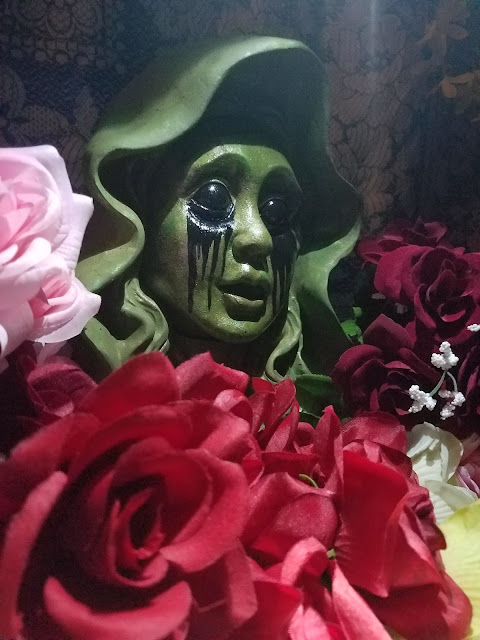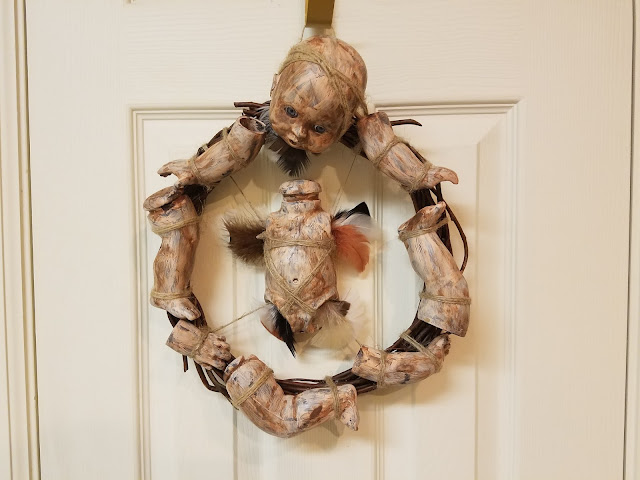$25 - $30 (based on 2017 prices)
Makes one bust
This prop was featured on the altar in 2017’s haunted house, where the opening room was decorated like an old Spanish church. To add eerie touches and enhance the atmosphere, I emphasized certain elements of Catholicism. In the case of this bust, I replaced the blood traditionally seen on stigmata with blackened goo. Consider purchasing the statue at a second-hand store or on clearance to cut the project’s cost.
- One polyresin bust (roughly twelve inches tall)
- One 10 oz. cans of interior/exterior, fast-drying spray paint in metallic copper
- One 2 oz. bottle of acrylic paint in flat black*
- One 2 oz. bottle of acrylic paint in grasshopper*
- One 2 oz. bottle of acrylic paint in hunter green*
- One 2 oz. bottle of acrylic paint in olive*
- One 0.44 oz. bottle of clear nail polish*
1. On a newspaper-lined surface in a well-ventilated area, give the bust an even coat of copper spray paint. Although I only used one, you are free to apply additional coats based on your desired coverage.
2. Mix grasshopper and hunter green paint together to achieve and aged patina and pat it onto the bust. You could use a brush with splayed bristles, a stippling sponge, or crumpled paper towels for the application. As you do so, focus on areas where oxidization would naturally occur: across the surface of the face, along the curves of the hair, and throughout the top of the head.
3. To add further age and additional depth, dab olive paint onto the statue. As with step two, focus on places where continued exposure to the elements would weather the copper. Be modest with your application during this process. You do not want to overpower the other colors with this darker tone.
4. Complete the aging process by flecking the bust with black paint. You can do this by either quickly flicking a paintbrush or using an old toothbrush and strumming your finger across the bristles. Since this process flings paint everywhere, it’s best to perform it outside. If you want a grimier appearance, brush brown paint along the statue’s surface to simulate dirt.
5. Use black paint to darken the eyes and create a dripping effect. You want the final version to look like blackened evil is pouring from the bust’s eyes. Try to simulate running mascara by exaggerating the streams and bringing them down toward the jaw line.
6. Use clear nail polish to give the paint a glossy appearance. I used two coats; however, you are free to apply as many coats as you feel necessary.
7. If you plan to display the prop on a surface you do not want to damage, consider applying squares of felt to its bottom, especially if your statue was designed for outdoor decoration.
*You will not use the entire bottle’s content for this project.


















